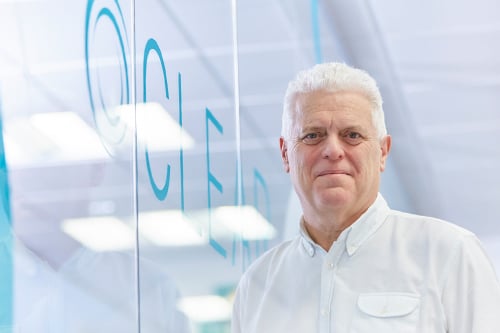

CEO of Clear Insurance Management, Howard Lickens (pictured), has worked in insurance broking for his entire career, moving from a role running a family insurance broker to join a city-based broker where he learnt the metrics of growth through acquisition, before starting Clear in 2001. What has kept him within the broking sector, he said, is his fascination with the mix between people skills and problem-solving skills that is required by the industry.
There is an intellectual side to the sector, he said, which is complemented by a distinctly human element that he believes is quite unique to insurance broking. He enjoys the time he spends speaking with people, and trying to find acquisitions and create the relationships needed for them to succeed, he said, and he believes that such relationships are still fundamental to insurance broking.
“I’m in the very lucky position of running a business that I thoroughly enjoy running,” he said, “in a segment which is doing pretty well, with a bunch of people that I love working with.”
Read more: Clear Insurance expands with Midlands swoop
Clear Insurance Management recently announced its acquisition of Light & Legal Indemnity Solutions, which provides specialist advice on rights of light and legal indemnity insurance and Lickens spoke to Insurance Business to discuss how this acquisition came about, and what he believes makes such a partnership thrive.
The acquisition of Light & Legal was driven by Clear’s focus on specialities and niche areas of insurance where it will not be competing with thousands of other brokers, he said, and this acquisition perfectly complemented Clear’s rights of light and legal indemnity teams. This was a good opportunity for Clear to genuinely extend its speciality, he said and to bring some talented new people into the business where they can blend their expertise with the current team to give the broker a real edge in the market.
“This is a great opportunity to grow the two businesses together,” he said, “where two and two will make a little bit more than four. And pretty much all we’re ever trying to do is to make sure that four and four make four plus, rather than with a lot of acquisitions where it makes four minus.”
To ensure this positive result, Lickens said, he bears several factors in mind when it comes to making an acquisition and among these are several “hygiene” concerns. The numbers have got to add up, he said, and it is generally unwise to look for acquisitions in a sector where you have no experience. With these factors considered, he said, another key area of focus must be on the cultural alignment between the companies.
“When we talk to vendors, we always talk about a stakeholder approach,” he said. “We will say to them, ‘I don’t care about you as a vendor, I care about your customers and I care about your staff. And if, together, we can do a great job for your customers and your staff then you as a vendor will have a very good experience and you’ll get a very good result.’”
Understanding what the vendor values, and creating a meeting of minds will enable a deal to work, Lickens said, and he stated he has no interest in speaking to somebody who is just looking to take a high multiple and who does not care how the deal gets done. It’s about taking a longer-term, more sustainable approach, he said, as there is no point in adding more and more business simply for the sake of it.
With this measured approach to acquisitions, Lickens is looking to continue to grow Clear Group through these opportunities but is taking his own advice when it comes to making the right choices. The brokerage has no interest in buying 20 businesses in a single year and losing control, he said. Clear took on private equity approximately 18 months previously, he detailed, and has an appetite to double in size every three or four years which he considers completely achievable.
The business would lose control if it took on too many acquisitions too quickly, he said, and so a balance must be reached. It’s a little like waiting for a bus, however, Lickens noted, in that you can wait for ages and then suddenly numerous arrive at once. It is impossible to tell how long a deal will take to get over the finish line, he said, and outlined how the quickest deal the business had reached took less than three months while another took 16 years.
“You simply have to go with the flow,” he said, “but we are very keen to grow, and we think there’s a place for what we do because of the way that we approach acquisitions. We are different to some of the more industrial acquirers for whom acquisitions are largely a numbers game, and we try to differentiate ourselves from the bigger consolidators because of the way that we treat people.”
